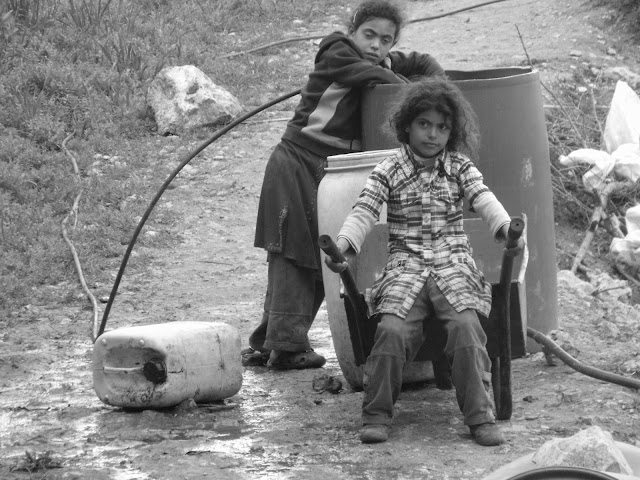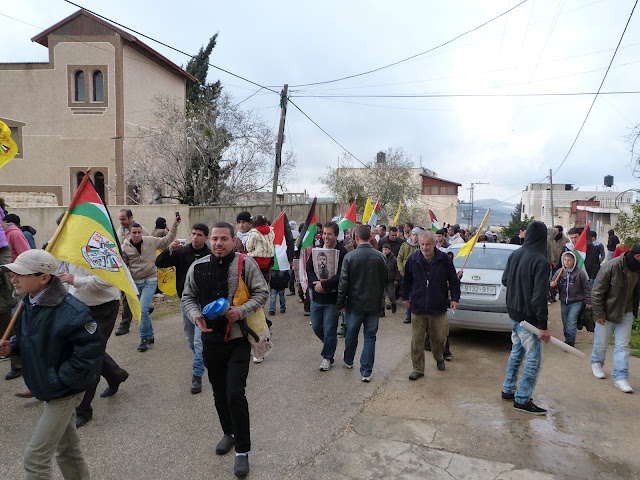Tag: Freedom of Access
-
The strangulation of a village
by Sylvia 10 March 2012 | International Solidarity Movement, West Bank Sheikh Nasri looks resigned as he describes his home as “the most terrorised village in the country”. With 34,000 uprooted trees in the last two years and some 4,800 dunams of land stolen, the village of Al Jab’a has little to smile about. Eighteen…
-
Meitar Checkpoint: Women demand an end to strip-searching by Israeli military and prison administration
12 February 2012 | International Solidarity Movement, West Bank A demonstration was held Sunday, February 12th at the Meitar checkpoint north of Beer Sheba in solidarity with Palestinian prisoners in the Naqab (Negev) region as well as their family members who must pass through this checkpoint to visit them. The demonstration was organised by the…
-
Kufr Qaddoum: Cut off road and electricity does not deter demonstrations
by Jonas Weber 10 February 2012 | International Solidarity Movement, West Bank Villagers and internationals assembled in Kufr Qaddoum after prayer time to demonstrate against the blocking of their main road to Nablus. The army cut off the electricity in the entire village as collective punishment for the ongoing demonstrations in Kufr Qaddoum. The villagers,…



